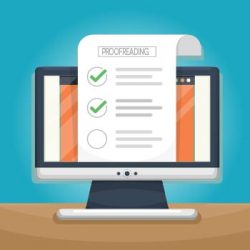If we had better foresight we would have published today’s resume tip two weeks ago. That is, before the deadline for our April conference candidates to submit their first resume draft. If you are an Alliance candidate, we hope you will refer to this tip prior to your first submission because it will make everyone’s life a good bit easier!
It goes without saying that you should always proofread important documents. And what document is more important to you in your transition than your resume? Yet, unfortunately, we see resumes riddled with basic errors that could have easily been caught and fixed if only good proofreading had been done. Similarly, we also have seen alot of resumes on job boards that were riddled with simple errors. Don’t let this be you! If a company wants to hire a person who has great attention to detail skills, they will bypass resumes that have simple mistakes. Here are six recommendations for better proofreading.
- Rule number 1: Don’t trust yourself. Enlist the help of someone else because a second set of eyes provides a fresh perspective.
- Print your resume. There’s something about working with a hard copy that helps you uncover items that you may have overlooked when reviewing it on the computer screen.
- Have a pen or pencil in your hand as you proofread and use it to follow along with the words. Doing so will help focus your attention.
- Go slowly. Rushing will cause you to overlook things. A good way to force yourself to go slowly is to read your resume out loud as you go.
- Before printing your resume for proofreading, make use of the grammar and spell-check tools that are integrated into Microsoft Word. You can also make use of a great online resource called Grammarly. The free version of the Grammarly app is quite effective, whereas the premium version has some nice additional features but is a bit pricey. One issue with using Grammarly is that it does not integrate into MS Word. You’ll have to add the Grammarly extension to your web browser and then save your resume as a Google Doc. When you open the document, Grammarly will highlight mistakes and make recommendations.
- One of the more interesting approaches to proofreading is to read your resume from bottom to top. We once had an Alliance staff member that was amazing at finding mistakes on resumes that others had overlooked. He credited his effectiveness to the bottom-up approach.
By the way. We inserted a small error in this message. Let us know if you find it!
Want to be on our email list to receive resume tips, interviewing advice, and other helpful career transition info? Sign-up here (unsubscribe at any time).

